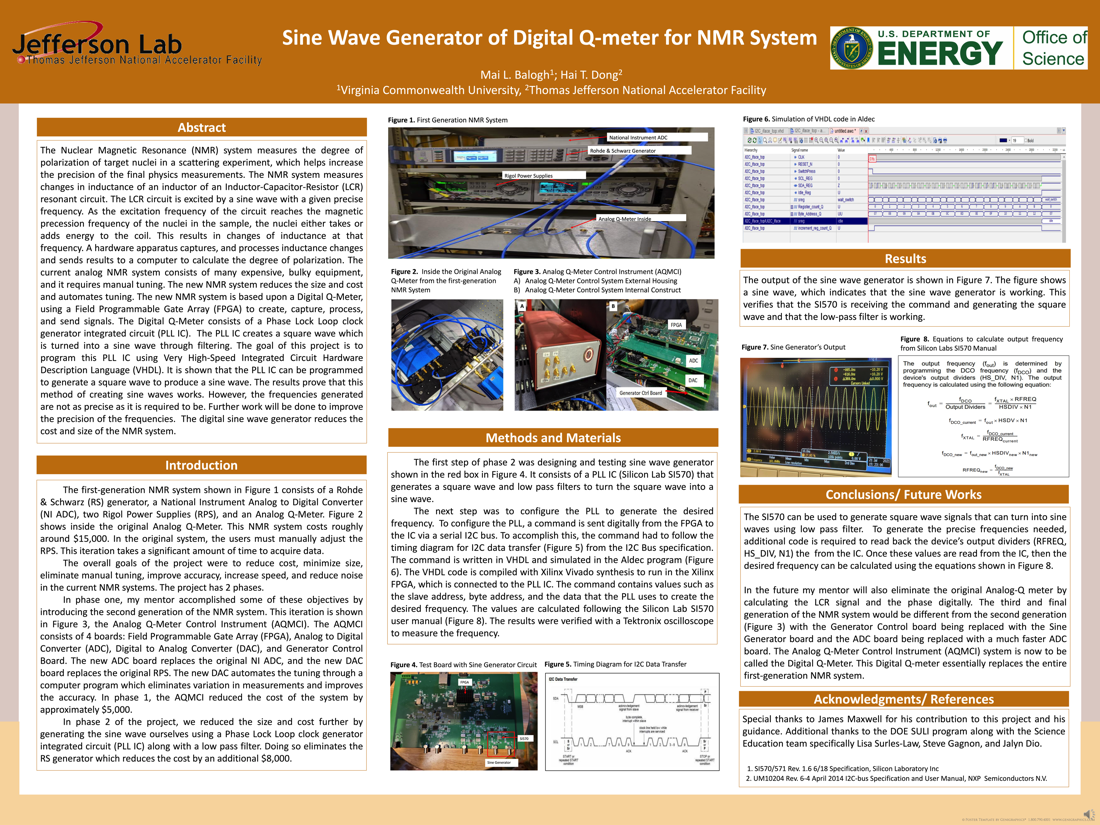Undergraduate Research at Jefferson Lab
Sine Wave Generator of Digital Q-meter for NMR System
Student: Lisa Balogh
School: Virginia Commonwealth University
Mentored By: Hai Dong
The Nuclear Magnetic Resonance (NMR) system measures the degree of polarization of target nuclei in a scattering experiment, which helps increase the precision of the final physics measurements. The NMR system measures changes in inductance of an inductor of an Inductor-Capacitor-Resistor (LCR) resonant circuit. The LCR circuit is excited by a sine wave with a given precise frequency. As the excitation frequency of the circuit reaches the magnetic precession frequency of the nuclei in the sample, the nuclei either takes or adds energy to the coil. This results in changes of inductance at that frequency. A hardware apparatus captures and processes inductance changes and sends results to a computer to calculate the degree of polarization. The current analog NMR system consists of many expensive, bulky equipment, and it requires manual tuning. The new NMR system reduces the size and cost and automates tuning. The new NMR system is based upon a Digital Q-Meter, using a Field Programmable Gate Array (FPGA) to create, capture, process, and send signals. The Digital Q-Meter consists of a Phase Lock Loop clock generator integrated circuit (PLL IC). The PLL IC creates a square wave which is turned into a sine wave through filtering. The goal of my project is to program this PLL IC using Very High-Speed Integrated Circuit Hardware Description Language (VHDL). It is shown that the PLL IC can be programmed to generate a square wave to produce a sine wave. The results prove that this method of creating sine waves works. However, the frequencies generated are not as precise as it is required to be. Further work will be done to improve the precision of the frequencies. The digital sine wave generator allows automated tuning of the NMR system. Automating tuning can eliminate the variation in measurement that is inherent in manual tuning. This allows for more repeatable measurements during the scattering experiments.
[Watch the presentation on YouTube]

Citation and linking information
For questions about this page, please contact Education Web Administrator.
